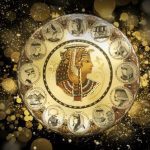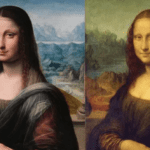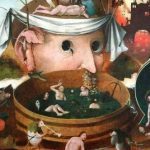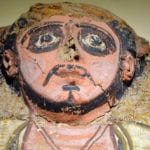 Weird Stuff
Weird Stuff  Weird Stuff
Weird Stuff  Mysteries
Mysteries 10 Tragic Disappearances and Deaths in Joshua Tree National Park
 History
History 10 Ways Childhood Really Sucked in the Old West
 Music
Music 10 Name Origins of Famous Bands from the 1990s
 Religion
Religion 10 Biggest Turnarounds by the Catholic Church
 Weird Stuff
Weird Stuff 10 Unbelievable Times Laws Had Unintended Consequences
 Humans
Humans Ten Historic Women Who Deserve Way More Credit Than They Got
 Movies and TV
Movies and TV 10 Films That Spawned Major Lawsuits
 History
History Ten Times Towns Were Wiped Off the Face of the Earth
 Creepy
Creepy 10 of the Most Disturbingly Haunted Public Houses in the UK
 Weird Stuff
Weird Stuff 10 Niche Subcultures That Are More Popular Than You Might Think
 Mysteries
Mysteries 10 Tragic Disappearances and Deaths in Joshua Tree National Park
 History
History 10 Ways Childhood Really Sucked in the Old West
Who's Behind Listverse?

Jamie Frater
Head Editor
Jamie founded Listverse due to an insatiable desire to share fascinating, obscure, and bizarre facts. He has been a guest speaker on numerous national radio and television stations and is a five time published author.
More About Us Music
Music 10 Name Origins of Famous Bands from the 1990s
 Religion
Religion 10 Biggest Turnarounds by the Catholic Church
 Weird Stuff
Weird Stuff 10 Unbelievable Times Laws Had Unintended Consequences
 Humans
Humans Ten Historic Women Who Deserve Way More Credit Than They Got
 Movies and TV
Movies and TV 10 Films That Spawned Major Lawsuits
 History
History Ten Times Towns Were Wiped Off the Face of the Earth
 Creepy
Creepy 10 of the Most Disturbingly Haunted Public Houses in the UK
10 Famous Art Mysteries We Still Can’t Answer
Throughout history, the art world has been shrouded in an enigma, with certain masterpieces carrying secrets that continue to baffle experts to this day. From missing paintings to cryptic symbols, these unsolved art mysteries captivate our imagination, leaving us yearning for answers. Imagine standing before a painting, its brushstrokes whispering tales untold while its secrets lie just out of reach. Such is the allure of these art mysteries, where every stroke and detail hold the potential to unlock a hidden truth.
Here we embark on a journey through the fascinating realm of the unknown, exploring ten perplexing art mysteries that have confounded experts and art enthusiasts alike. Each case presents a unique puzzle, raising questions about the artists, their intentions, and the hidden narratives within their creations. From the whereabouts of vanished masterpieces by renowned painters to the enigmatic messages encrypted within symbolic motifs, these mysteries serve as a testament to the power of art to both captivate and mystify. Prepare to delve into the depths of artistic enigma as we explore these ten famous art mysteries that have defied explanation for decades if not centuries.
Related: 10 Rare Discoveries About Famous Artists And Their Art
10 The Disappearance of Leonardo da Vinci’s Leda and the Swan
Leonardo da Vinci’s masterpiece, Leda and the Swan, holds immense historical significance and has fascinated art enthusiasts for centuries. While the original painting is lost to time, Leonardo’s sketches and surviving copies provide glimpses into his artistic vision.
Inspired by the mythological tale of Leda’s seduction by Jupiter in the form of a swan, the composition featured a nearly naked figure of Leda, accompanied by the swan and two eggs from which four babies emerged. The painting’s exquisite detail, particularly in the depiction of the landscape, vegetation, and Leda’s intricate hairstyles, showcases Leonardo’s meticulous craftsmanship.
However, the circumstances surrounding the disappearance of Leda and the Swan remain shrouded in mystery. The original painting is lost, and only copies and sketches by Leonardo and his followers provide clues about its composition and style. Theories and speculations abound regarding the fate of this revered masterpiece.
Some propose that it may have been destroyed over time or lost during periods of war and upheaval, while others suggest it could be hidden away, waiting to be rediscovered. Despite its absence, the ongoing efforts to locate and recover the lost painting persist, fueled by the desire to unravel the enigma surrounding this captivating work of art.[1]
9 The Missing Panels of the Ghent Altarpiece
The missing panels of the Ghent Altarpiece have left art experts and enthusiasts captivated, adding an air of mystery to this renowned masterpiece. The polyptych, also known as the Adoration of the Mystic Lamb, holds immense historical and artistic significance, depicting scenes from Christianity and Catholic mysticism.
Throughout its turbulent history, the Ghent Altarpiece has faced various challenges, including theft, destruction attempts, and Nazi looting. However, it is the theft and mysterious disappearance of the lower left panel, known as the Just Judges, in 1934 that continues to baffle investigators and art enthusiasts alike.
The heist of the Just Judges panel initiated a complex investigation marked by intriguing clues and enigmatic characters. The prime suspect, Arsène Goedertier, left a clue regarding the panel’s location before his death, but the missing portion remains undiscovered. The case has spawned theories involving possible accomplices, the involvement of the diocese, and even the artist Jef van der Veken.
Despite extensive searches and investigations, the mystery of the missing panels endures, leaving art historians and investigators wondering who orchestrated the thefts and why, adding an enduring sense of intrigue to the captivating story of the Ghent Altarpiece.[2]
8 The Stolen Vermeer Paintings
The stolen Vermeer paintings have become an enduring enigma in the art world, shrouded in mystery and speculation. Johannes Vermeer, the brilliant Dutch master, left a legacy of exquisite paintings that continue to captivate audiences with their luminosity and intricate detail. However, the audacious art heist that saw the disappearance of several Vermeer paintings has left experts puzzled and the art community in awe.
The lingering mystery surrounding the whereabouts of the stolen artworks only adds to the intrigue. Over the years, stolen Vermeer paintings such as The Love Letter, The Guitar Player, and Woman Writing a Letter, with her Maid have been the subjects of high-profile thefts and subsequent recoveries, each incident leaving lingering questions and unresolved motives.
Theories behind the thefts and potential motivations of the culprits range from political motivations, such as ransom demands related to the IRA, to the allure of possessing priceless masterpieces. As the search for the stolen Vermeer paintings continues, art experts and investigators remain fascinated by the audacity of the heists and the elusive nature of these extraordinary works of art.[3]
7 The Vanishing Caravaggio Masterpieces
Michelangelo Merisi da Caravaggio’s artistic prowess continues to captivate art enthusiasts with his revolutionary style and provocative paintings. However, the art world remains perplexed by the vanishing acts of several Caravaggio masterpieces, leaving experts and investigators immersed in a web of mystery and speculation.
One of the most renowned cases involves Caravaggio’s Nativity with St. Francis and St Lawrence, stolen from the Oratory of Saint Lawrence in Palermo in 1969. The theft remains unsolved, with theories suggesting the involvement of the Sicilian mafia and its potential connection to powerful mobsters. Recent investigations have offered hope for uncovering the truth, but concerns persist about the painting’s condition due to its improper handling over the years.
Another intriguing development revolves around a potential Caravaggio masterpiece discovered in Madrid. The painting, titled Crowning of Thorns, has ignited excitement and speculation among art experts and the Spanish government. If authenticated as a Caravaggio, it could be worth up to €150 million.
The Spanish government has temporarily halted its auction as further technical and scientific studies are needed to confirm its authenticity. These recent developments highlight the ongoing fascination and continuous efforts to unravel the mysteries surrounding Caravaggio’s missing masterpieces, keeping the art world on the edge of anticipation and curiosity.[4]
6 The Lost Work of Vincent van Gogh
Vincent van Gogh, the enigmatic genius of art, left behind a legacy that intertwines brilliance and tragedy. His vivid brushstrokes and emotional depth continue to captivate audiences worldwide. Yet, amid the fame and recognition, the mystery of the missing van Gogh paintings casts a shadow over his oeuvre. Several of his works have vanished without a trace, leaving experts baffled and art enthusiasts longing for their rediscovery.
Theories abound regarding the fate of these lost masterpieces. Some speculate that hidden caches safeguard these valuable works, while others ponder the possibility of accidental destruction. The search for these missing pieces persists, fueled by the unyielding efforts of art historians and collectors determined to authenticate and locate the vanishing van Goghs, shedding light on the enigma surrounding them.
One such renowned painting that has mysteriously disappeared is Still Life, Vase with Daisies and Poppies. Its current owner and location remain unknown, casting an air of intrigue over its existence. The involvement of intermediaries and reclusive billionaires raises suspicions about its true ownership and ignites concerns about potential illicit activities in the art market.
Meanwhile, online exhibitions like “Missing Masterpieces” strive to crowdsource ideas and theories to track down these lost artworks, including van Gogh’s The Parsonage Garden at Nuenen in Spring, which was stolen during the COVID-19 lockdown. Through collaborative efforts and the advent of technology, hope lingers that these vanished van Gogh paintings may one day resurface, bringing an end to their haunting absence and adding a new chapter to the enduring mystique surrounding the artist and his works.[5]
5 The Case of the Stolen Crown Jewels of Iran
Deep within the realms of opulence and regality lies the magnificent crown jewels of Iran, an awe-inspiring testament to centuries of Persian splendor and craftsmanship. However, an audacious heist shrouded in mystery cast a dark cloud over these priceless treasures, leaving experts and investigators perplexed. The exact circumstances surrounding the disappearance of these invaluable gems remain unknown, as the stolen crown jewels of Iran have yet to resurface, evading the grasp of justice and defying all efforts to reclaim them.
This brazen crime strikes at the heart of the art world, sparking speculation and conjecture that resonate through the corridors of international intrigue. The motivations behind this theft weave a complex tapestry of hidden agendas and clandestine networks, leaving no stone unturned in the search for truth.
The labyrinthine journey of historical treasures, such as the Koh-i-Noor Diamond, has raised questions about the complexities of restitution and the enduring echoes of colonial looting. In the case of the stolen crown jewels of Iran, the issue of ownership becomes entangled in the historical backdrop of political upheaval and exiled monarchs.
While allegations have been made regarding the Pahlavi dynasty’s involvement in taking Iran’s royal jewels out of the country, exiled Queen Farah Pahlavi vehemently refutes such claims, emphasizing that most of the royal jewelry collection remains on display at the Treasury of National Jewels in the Central Bank of Iran. As the web of intrigue continues to unravel, the unsolved nature of this crime perpetuates an aura of mystique, leaving experts, authorities, and admirers alike yearning for the day when the stolen crown jewels of Iran may once again see the light of day.[6]
4 The Elgin Marbles Controversy
The Elgin Marbles, steeped in historical significance, captivate the imagination with their enigmatic origins. These ancient sculptures once adorned the majestic Parthenon in Athens, Greece, depicting Greek mythology and embodying a rich cultural heritage. However, their journey took a contentious turn when Thomas Bruce, the 7th Earl of Elgin, obtained permission to remove the marbles, claiming preservation as his motive. This act of acquisition, now viewed as imperial plunder, sparked an ongoing debate and controversy surrounding their ownership and rightful display.
Today, the question of where the Elgin Marbles truly belong remains unresolved, further shrouding these sculptures in mystery and speculation. Greece has persistently called for their return, emphasizing their cultural significance and advocating for their reunion with the remaining sculptures in Athens. However, the British Museum in London, where the marbles currently reside, has refused these requests, asserting the importance of their global accessibility and the museum’s role as a custodian of world heritage.
This complex situation weaves together cultural, legal, and ethical complexities, prompting ongoing discussions and proposing innovative solutions such as 3-D technology to create replicas that could satisfy both Athens and London. As the controversy persists, the Elgin Marbles remain an enduring enigma, inviting speculation about their rightful location and the deeper questions of heritage and ownership they represent.[7]
3 The Mysterious Origins of the Kensington Rune Stone
The Kensington Rune Stone, shrouded in controversy and uncertainty, emerges as a puzzling artifact that challenges conventional historical narratives. Discovered by Swedish immigrant Olof Öhman in 1898 while clearing land in Kensington, Minnesota, this greywacke stone adorned with enigmatic runes has ignited passionate debates over its authenticity.
Conflicting theories abound regarding its origins and creators, with some proposing that it points to Norse explorers venturing into North America, pushing the boundaries of accepted historical accounts. However, skepticism persists, fueled by linguistic analysis, historical context, and the convenient timing of its discovery.
The enduring enigma surrounding the Kensington Rune Stone has left experts divided and the mystery unsolved. Scholars and historians engage in ongoing debates, analyzing the stone’s weathering patterns, rune wording, and the gruesome tale it portrays. While scientific advancements have shed some light on the stone’s composition and age, a definitive resolution eludes researchers.
Recent discoveries and examinations continue to offer intriguing insights into this captivating artifact, further fueling speculation and the quest for answers. As the puzzle of the Kensington Rune Stone persists, it serves as a reminder of the mysteries that lie within our historical records, beckoning exploration and reevaluation.[8]
2 The Uncertain Fate of Nazi-Looted Art
The uncertain fate of Nazi-looted art unveils a haunting chapter in the history of World War II, where the Nazis systematically plundered and confiscated countless masterpieces from Jewish collectors and cultural institutions. These stolen artworks, imbued with the stories of cultural despoliation, have remained elusive, leaving experts puzzled and the rightful owners longing for justice. Efforts have been ongoing to identify and return these stolen treasures to their rightful homes. Still, ownership disputes and the challenge of tracking missing artworks pose significant hurdles in the path to resolution.
Notable cases have emerged, shedding light on the complexity of unraveling the fate of Nazi-looted art. One such case involves a Pissarro painting that was part of a Jewish couple’s collection seized by the Nazis, and the family now faces a lawsuit demanding its surrender.
Stuart E. Eizenstat, a prominent diplomat and lawyer in Holocaust restitution, has taken on the challenge, viewing this claim as intricate and seeking a fair settlement that honors the complexities of the situation. Recent advancements in record-keeping and the identification of other looted artworks provide glimmers of hope, raising the possibility of eventual resolutions that bring solace to those whose cultural heritage was unjustly stolen.[9]
1 The Curse of the Basano Vase
The Basano Vase, a mysterious and chilling artifact, has become synonymous with tales of terror and misfortune. Allegedly cast in the 15th century, its origins and the nature of its curse remain enigmatic. According to legend, the vase was a wedding gift to an Italian bride who met a tragic demise on her wedding night while tightly clutching the silver vessel.
As the vase passed down through her family, each owner experienced a series of inexplicable deaths, fueling speculation and dread. Attempts to hide or sell the vase proved futile, as subsequent buyers met untimely demises, leaving the fate of the Basano Vase uncertain and shrouded in mystery.
However, skepticism surrounds the Basano Vase, with some questioning its authenticity and existence due to the lack of specific details and verifiable evidence. The legend of the vase carries inconsistencies, raising doubts about the true nature of the curse and the authenticity of the vase itself.
Skeptics point to the psychological impact of belief in curses and the power of suggestion, proposing that the misfortunes surrounding the Basano Vase may be a result of coincidences or self-fulfilling prophecies. Nevertheless, the mysterious Basano Vase continues to captivate imaginations and perpetuate speculation about its origins, curse, and the potential dangers it poses.[10]
+ Bonus: The Ghostly Goya
The enigmatic and haunting Black Paintings by Francisco Goya continue to baffle experts and art enthusiasts, shrouding their origins in mystery and controversy. Executed directly on plaster walls in the Quinta del Sordo, these paintings evoke a range of emotions and have undergone significant damage and alteration over time.
The purpose, authorship, and restoration of these enigmatic works remain subjects of ongoing debate and exploration, adding to their mystique and intrigue. Efforts to unravel the secrets hidden within these haunting artworks persist, with scholars and researchers delving into the atmospheric ambiance and relationship between Goya’s creations and the rooms they once occupied.
The Black Paintings are not only known for their mysterious origins but also for the unexplained phenomena and ghostly rumors that surround them. These eerie tales add another layer of fascination to these already enigmatic artworks, leaving experts and art enthusiasts intrigued and speculating about the unseen forces and hidden messages behind Goya’s brushstrokes.
The ongoing exploration and analysis of the Black Paintings seek to decipher the enigma embedded within them, shedding light on their true meaning and unraveling the secrets that continue to captivate and bewilder those who encounter these haunting masterpieces.[11]








